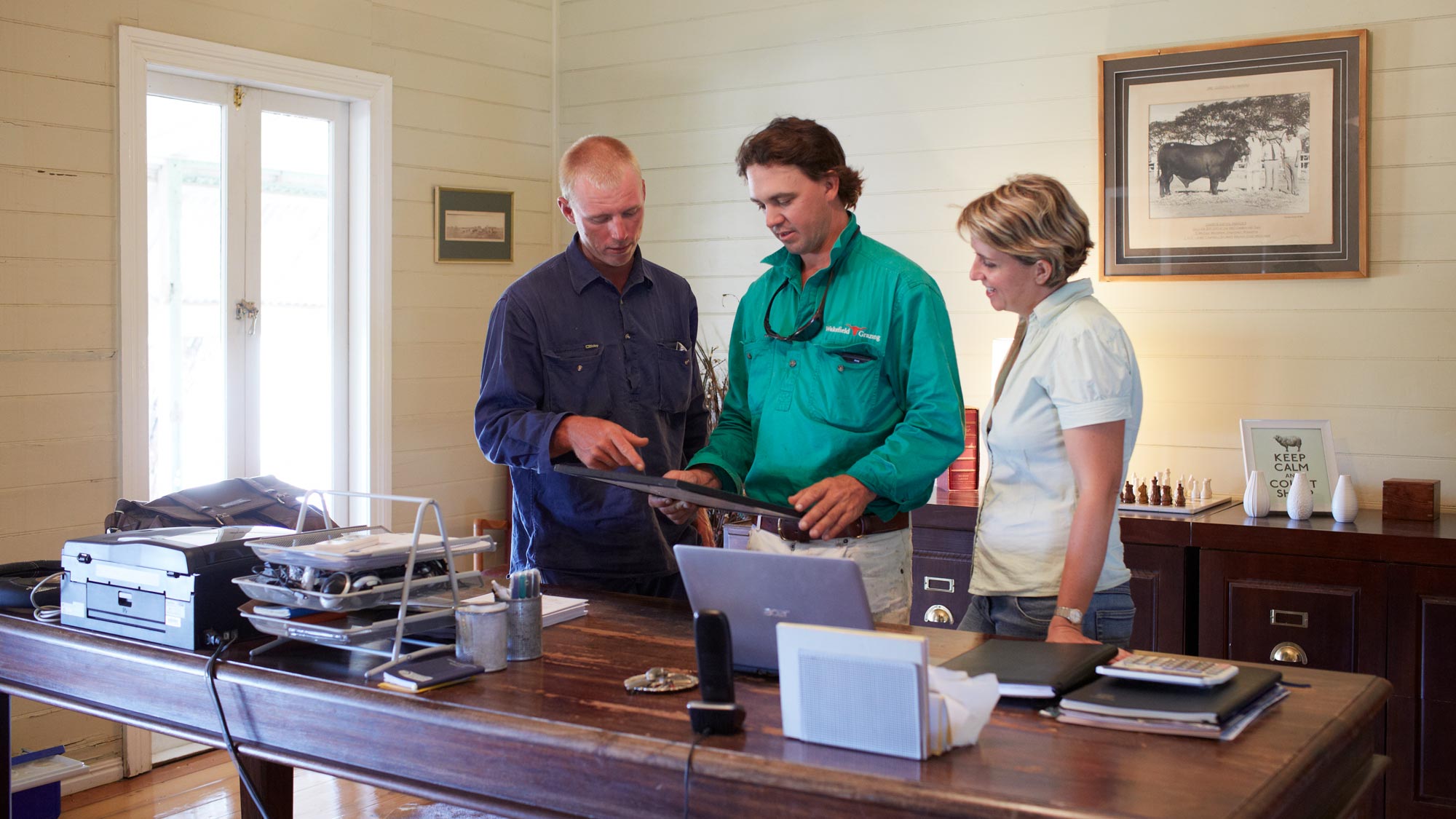Chapter 1.1 Establish business objectives and plans
Chapter 1.1 Establish business objectives and plans
Background information
There are four key steps in creating your business plan:
- Analyse your current situation. Identify how your business is currently operating and consider the key financial, social and environmental issues and drivers.
- Set the goals. Building from your current situation, decide where you want the business to go and what objectives need to be set. Begin to identify any trade-offs and clarify priorities. Any objectives that are set need to be as explicit, measurable and time specific as possible.
- Implementation. What are the stepping stones towards the goal? What are the tasks? Who is responsible for each, and over what timeframe? Implementation must be feasible with the skills and resources that are either currently available or that can be realistically obtained.
- Monitor progress. Identify any critical milestones. How will you know if things go wrong? Is progress as expected? What actions will be taken if things do not progress according to the plan?
This chapter focuses on setting the business objectives because success is the result of meeting these objectives. The business objectives must consider the personal, social, environmental, and financial components of the business and will be unique to your business.
At a glance
- Plan, and then annually review, business objectives to check they are still appropriate and achievable — for this, some level of documentation is needed.
- The objectives must consider the personal, social, environmental, and financial components of the business.
Formal business planning can be a challenging proposition for many sheep producers. To assist, a ‘starter’ tool is included – a SWOT analysis (tool 1.1), the objective setting (tool 1.2) and how to prepare a business plan (tool 1.3).
Many sheep producers find that engaging professional or outside assistance is the best way to start developing formal business plans and provides a good return on the investment.
Documenting business objectives
The extent to which objectives and plans are documented is a personal and business choice. However, best practice is to write down these plans and objectives because there are some significant advantages:
- Writing down plans and objectives gives the process more rigour, forces a deeper level of thinking and clarity and can impose a discipline that might otherwise be lacking.
- While the business owner(s) may have the final say, inputs from family members, staff, suppliers and advisors can be sought more easily and incorporated if the plans are written and, therefore, easily shared. Documented objectives are evidence of agreement at a point in time.
- Accountability, including tracking progress towards the objectives, is more straightforward when the objectives have been recorded.
- Objectives need to address the short term (this year), medium term (next 3 years) and long term (next 10 years) and this is difficult to clarify without a written plan.
- Determining and balancing priorities, including conflicting objectives, is easier when the objectives are documented.
- A more formal process is helpful if objectives need to be set and decisions made in an area where you do not have extensive experience.
Planning doesn’t have to be all hard work. Tool 1.5 outlines a simple process to let everyone with a stake in the business get involved in the planning process. Tool 1.6 is a goal setting technique to encourage the whole family to consider what they would like to achieve, preserve and avoid.
SIGNPOSTS
WATCH & LISTEN
A podcast series to educate agricultural businesses on how to work through generational transfer of farms.
Stories from NSW’s best and brightest young farmers and fishers. Each episode is a candid conversation about the business of primary production.
READ
Stories from NSW’s best and brightest young farmers and fishers. Each episode is a candid conversation about the business of primary production.
Recent droughts across Australia have demonstrated the dramatic effects that climate variability can have on farm businesses and households. Here ABARES provides some insight into these issues by examining the effects of recent climate variability on Australian farms.
The resources within this guide can assist with your goal setting, provide business plan templates, and help guide you to prepare your own business plan.
A manual to assist producers with their skills to manage a successful business.
A guide to build your own comprehensive business plan, which identifies strengths, weaknesses and key performance indicators (KPIs).
A fact sheet to create simple and effective strategic plans for your growing business, focusing on establishing goals and actions to ensure farming businesses develop and prosper.
USE
Several resources, templates and checklists for business planning.
Everything you need to know to about how to write a great business plan.
ATTEND
Leadership programs and services to support people in all stages of their leadership journey. Participants will be exposed to local leadership activities in the community and relevant businesses and industries to highlight networking and relationship building and how challenges have been met with solutions.
A national program for young people in all facets of the wool industry which develops their leadership and professional skills.
A two-day financial and business management training workshop for all livestock producers. The aim is to enhance producer knowledge and skills in basic financial and business management to improve business efficiency and profitability.
Rabobank has designed the Executive Development Program and Farm Managers Program to grow business skills, strengthen networks and improve strategic management ability.






